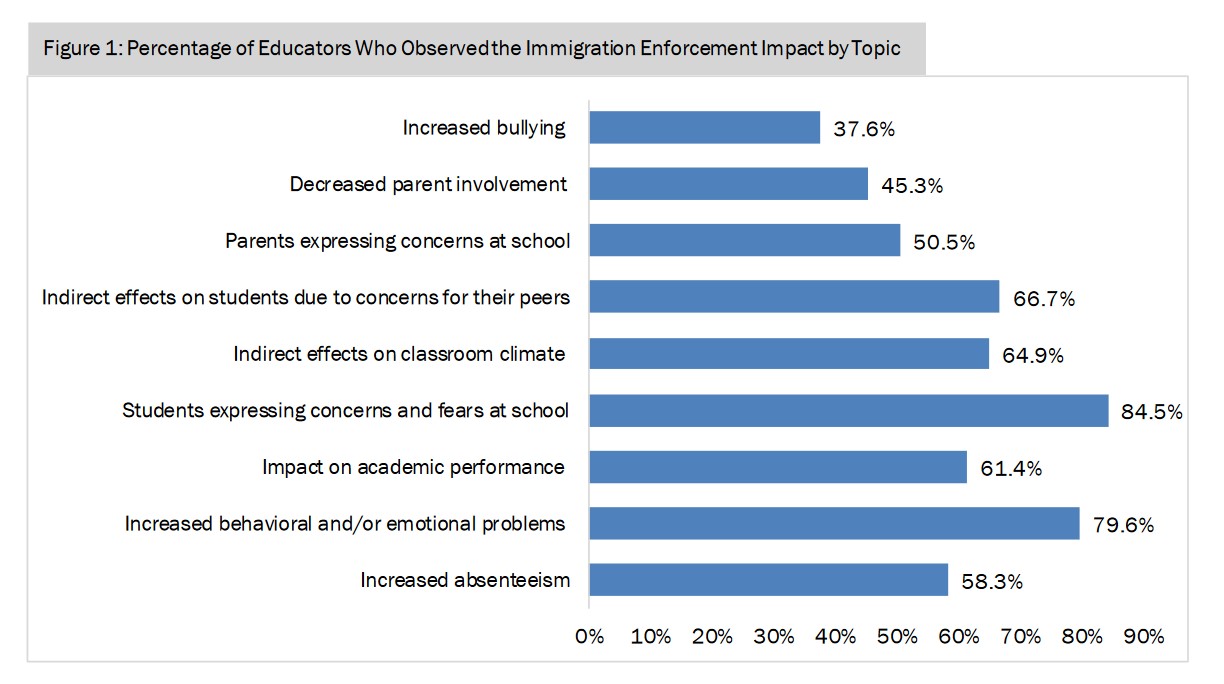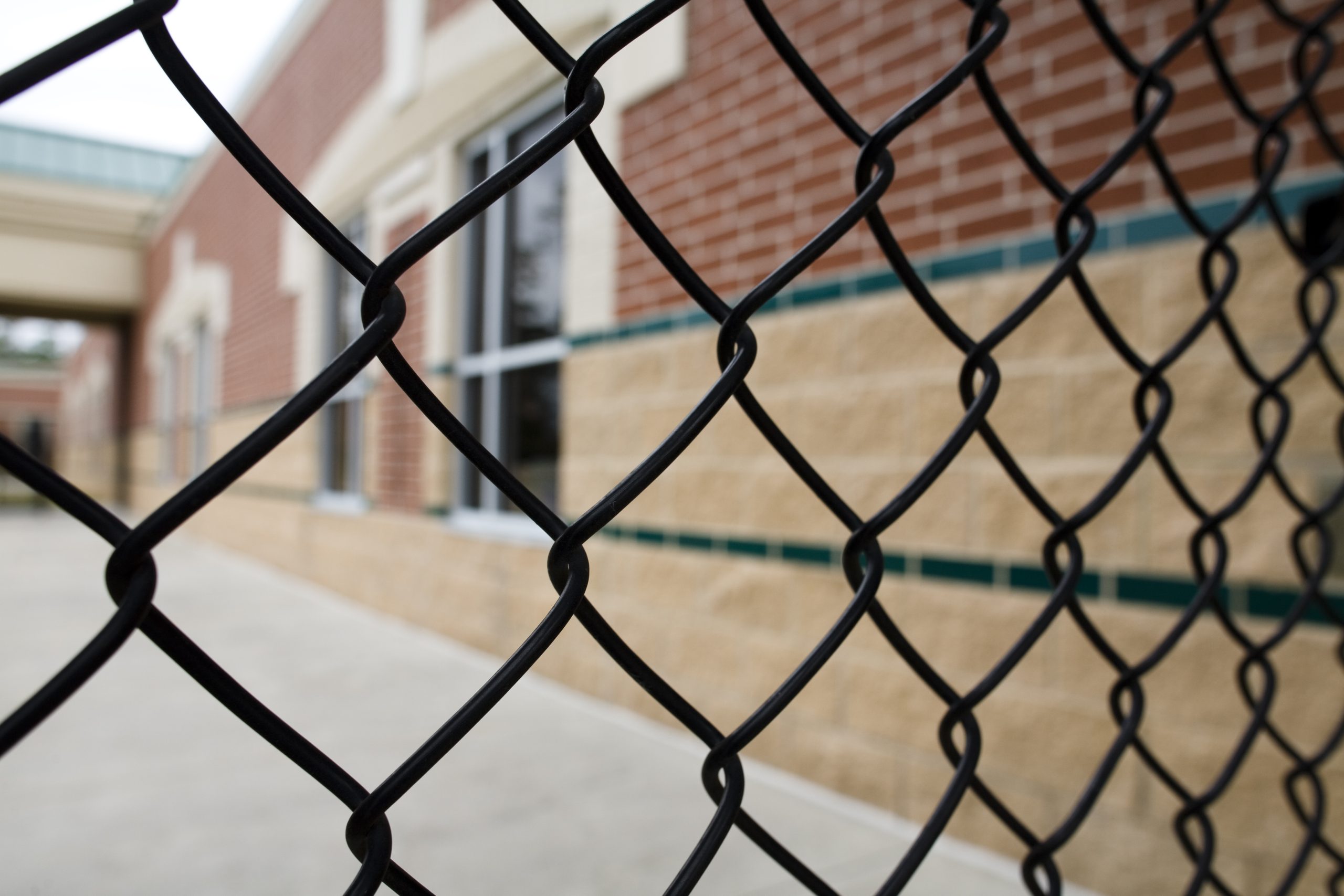Current U.S. immigration enforcement policies have thrust many students “into the center of an excruciatingly difficult situation” and severely impacted schools’ efforts to offer an equitable education to all students, according to a new brief from Harvard University’s Immigration Initiative.
“Under Siege: The Disturbing Impact of Immigration Enforcement on the Nation’s Schools” concludes that immigration enforcement is presenting major challenges for students, teachers, counselors, administrators, parents and communities. The brief reviewed representative nationwide survey results from more than 3,600 educators from 24 districts and two educator networks with more than 760 schools in 13 states.
The brief notes that 4.5 million U.S. citizen children have at least one parent who is unauthorized — estimates for this population in California range between 750,000 and 1 million students — and that, as of 2017, an estimated 600,000 children under the age of 18 were undocumented nationwide. That places more than 5 million children at risk of being directly affected by immigration enforcement policies.
The 1982 U.S. Supreme Court decision in Plyler v. Doe guarantees that all children, regardless of their immigration status, are entitled to a free and equal public education.
Beyond the impacts on students directly affected by enforcement, the brief finds that all students are being indirectly impacted, largely because of the overwhelming expression of fear from and for their classmates. “All students experience the disappearing classmates, the empty desks and the behavioral responses of those students whose families are being affected,” the brief states. It later continues, “Classrooms as a whole are being affected by the immigration enforcement as teachers struggle to teach in an atmosphere of stress and fear.”
Additionally, the brief notes that schools that serve the nation’s poorest children and struggle the most with achievement gaps and health issues are also the most likely to enroll immigrant students. Therefore, “some would argue that the immigration enforcement regime places an unreasonable additional burden on these schools.”
Among the key survey responses from educators who observed enforcement impacts:
- Roughly 85 percent reported observing students’ expressions of fear of an Immigration and Customs Enforcement intervention in their lives, with nearly 44 percent saying this was “extensive.”
- 65 percent reported indirect effects on classroom climate and 61.4 percent observed an impact on academic performance.
- Two-thirds reported indirect effects on other students of having peers threatened by immigration enforcement.
- Nearly 60 percent reported increased absenteeism.
- More than 88 percent reported a need for schools to reach out to their communities with information and support for immigrant students’ families, although many have not done so.
The brief also includes a host of real-life scenarios playing out in public schools across the country. “Very many high school educators mentioned their best students giving up on the idea of going to college, and reducing their commitment to school, even quitting school to get a job to help family because their futures had become so uncertain,” it states, noting that these students are overwhelmingly U.S. citizens.
To remedy the situation impacting millions of students, the study’s authors call for Congressional protections of these students, and for district- and state-level assistance to offer critical support and resources to impacted families, and to provide counseling to students and educators.
Many concerns aligned to those in the Harvard survey results from California’s schools and their elected leaders were shared by CSBA Associate General Counsel Mike Ambrose when he presented at a public hearing of the California Advisory Committee to the U.S. Commission on Civil Rights. The hearing focused on the impact of federal immigration enforcement on California’s children.
CSBA’s testimony to the committee focused on the feedback from its member districts and county offices of education, explaining how increased immigration enforcement has impacted schools’ ability to meet their constitutional obligation to provide equal access to an education to all students, regardless of immigration status. Ambrose relayed concerns raised by local educational agencies about increased student absences, students failing to enroll in school, families not attending school events and increased stress among some students affecting their ability to succeed in school.
Further information from CSBA:
Collection of resources on students impacted by immigration status
Blog post: “Convening highlights keys to supporting immigrant and refugee students”
California Schools magazine, summer 2019: “To understand and serve: How schools can uplift immigrant students”
California Schools magazine, summer 2018: “In safe hands: How school boards can support California’s undocumented students”






